 Nutritional needs vary little between kids and adults—therefore what works for one, works for the other. But what if nutrition is not working for Mom and Dad? Like the famous Hippocratic adage – Physician heal thyself – most adults could benefit from a review of the dietary needs for the whole family’s optimal weight, performance and activity.
Nutritional needs vary little between kids and adults—therefore what works for one, works for the other. But what if nutrition is not working for Mom and Dad? Like the famous Hippocratic adage – Physician heal thyself – most adults could benefit from a review of the dietary needs for the whole family’s optimal weight, performance and activity.
Depending upon where we draw the “overweight” line, one-third to a whopping two-thirds of Americans are overweight or obese. One in ten American adults are type 2 diabetic and an astounding 35% of Americans are prediabetic – of which 90% don’t even know it. American youth, age eighteen and under, are raised in and therefore mirror the nutritional climate that has created this metabolic disaster. To clear the confusion, and help find a healthy diet for your athletic children (and greater adult community), let’s review some basics of sports nutrition.
Three Mistakes When Feeding Young (and Old) Athletes
#1 – Sports drinks and sugared milk. Sports drinks are an undisputed problem—even the American Association of Pediatrics, which is historically cautious about nutritional opinions took a bold stance in 2011 to attack sports drinks similarly to sodas. They say “Frequent or excessive intake of caloric sports drinks can substantially increase the risk for overweight or obesity in children and adolescents.” (Maurer, R. The Blood Code: Unlock the secrets of your metabolism. 2014, pg152-157.)
But I include chocolate milk too—chocolate milk has 9-12 teaspoons of sugar in 12-ounces—equivalent to most soda. The original research that put chocolate milk on the sports map simply compared it to sugary sports drinks and used a small group of lean, elite adult cyclists as a reference group. The truth is protein helps athletes recover—therefore any protein compared to no protein provides better workout recovery. However, there are more factors to consider for your kids.
Solution: Cook a good meal. 99% of the time, a cooked meal with adequate protein and carbohydrate that follows the exertion is enough to recover and prepare for the next day’s activities.
#2 – Low fat diets. Low fat diets do not make leaner or better athletes. There are only three food groups to make a meal: fats, carbohydrates and proteins. Lower one and the other two go up proportionally. Low fat diets elevate the overall carbohydrate burden and promote weight gain, high blood sugar and low energy.
Solution: Literally and figuratively, keep the skin on the chicken. Add dietary fats to your family’s nutrition through raw nuts, seeds, avocados, olives, and butter. Enjoy whole fatty cuts of meat and fish ~ purchase 75-85% ground beef instead of the too-lean 90% stuff and enjoy fish cooked with plenty of butter every week.
#3 – Frequent meals. The recommendation to eat 6-times per day has only been since post-1970 America, when low-fat foods mistakenly became the federal recommendation. The failed experiment of eating more-frequent low-fat meals has helped to create the overweight, over-diabetic culture that we live in.
Solution: Eat breakfast, lunch and dinner. Each meal should have the protein, fat and carbohydrate needed to fuel four to six hours of activity without hunger. The meals that follow athletic exertion must contain adequate protein to assure a full recovery.
As an author and doctor specializing in metabolic health and recovery, I base clinical decisions on data available. But at home, with three athletic kids, let me share with you some practical items from our kitchen:
Three Ingredients for Athletic Success
#1. Whey protein powder: Add to smoothies in a pinch. Add frozen avocados and nut or seed butters for healthy fat additions to a base such as almond milk. (Make sure your whey protein does not contain artificial sweeteners like acesulfame-K or NutraSweet often found in “low carb” sports proteins.)
#2 Electrolyte powder: In the heat of summer especially, I add a scoop of my favorite low to no-sugar electrolyte mix to water bottles. (Try Ultima brand – makes great popsicles too!)
#3 Multiple vitamin & mineral: My kids take the same formula I use, 1-2 capsules of a broad spectrum formula. (Only use iron if you know your child needs it. In my experience, child athletes, especially young women, should have their ferritin (iron) levels tested.)
To summarize, youth and adult athletes have similar nutritional needs – everyone benefits the most from quality cooked meals after a game or training session that contain good quality proteins, good fats, and carbohydrates that satisfy hunger for 4-6 hours. Stay away from sugary sports drinks and chocolate milk in recovery, and use whey protein shakes, or water mixed with dye-free, sugarless electrolyte powders to replenish trace mineral lost by perspiration. A daily multi in capsule form provides essential vitamins and minerals for accelerated athletic metabolic function.


